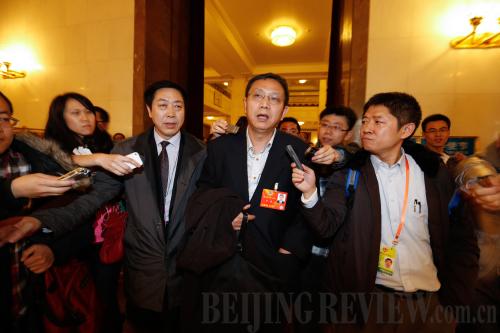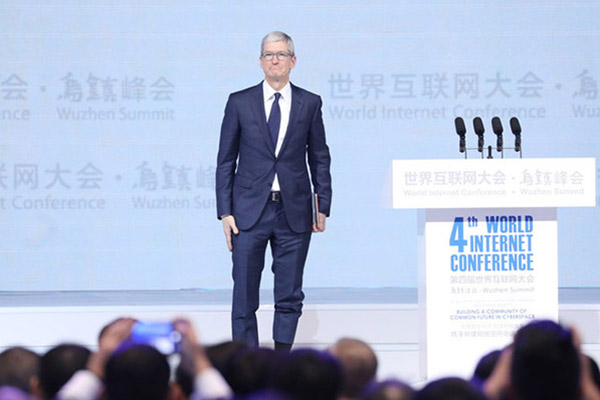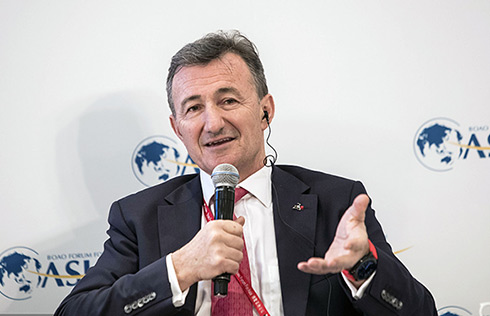Interest rate liberalization, a reform much needed
Interest rates must be fully liberalized to meet the demands of the market
In recent years, interest rate liberalization has been widely discussed amidst China's financial reforms. The People's Bank of China (PBC) expanded the floating range of deposit and loan interest rates in 2012, and eliminated the floor on lending rates on July 20, 2013, a clear indication of the government's intention to liberalize interest rates in future financial reforms.
|
 |
|
Jia Kang, Director of the Research Institute of Fiscal Science, Ministry of Finance, is surrounded by journalists after attending the First Session of the 12th CPPCC National Committee meeting on March 3,2013. [Photo / CFP] |
As China is exploring the potential impact on China's currency and adjusting financial asset structures, interest rate liberalization is of prime importance. Activating existing assets doesn't mean merely speeding up the circulation of monetary credit, but restructuring monetary credit and pushing forward the transformation of China's economic growth pattern.
Imbalanced allocation
Why is the interest rate liberalization so vital to China's financial reforms? For years, China has adopted a policy of "financial repression." Since deposit and loan interest rates were artificially depressed, they failed to reflect the real status of money supply and demand. Under such circumstances, the demand for bank credit funds has far exceeded supply, and a lack of transparency has led to an imbalance in the allocation of credit.
As banks account for a large part of social financial assets, the bond market has been dispirited. As of May 2013, loans issued by financial institutions had reached 67 trillion yuan ($10.95 trillion), while the total assets of commercial banks had surpassed 139 trillion yuan ($22.71 trillion), according to PBC statistics.
In contrast, the total assets of China's insurance industry were a mere 7.7 trillion yuan ($1.26 trillion), and deposits in the bond market were 25 trillion yuan ($4.08 trillion), the total value of the stock market at 24.7 trillion yuan ($4.04 trillion). Counting in the 8 trillion yuan ($1.31 trillion) of trust products, the size of the non-bank financial markets is equivalent to the balance of commercial bank credit. However, the 8 trillion yuan of trust products mostly came from commercial bank loans, and the 10 trillion yuan ($1.63 trillion) bank financial products should also be categorized as bank credit.
Apparently, bank credit comprises the lion's share of China's social financing, behind which is the government's regulation of the bond and stock markets, as well as the suppression of interest rates. Since interest rates are kept low, it's much easier for enterprises to get loans than issuing bonds or financing by getting listed on the stock market. In other words, companies are not compelled to raise money in these ways, resulting in the comparative lag in bond and stock markets.
The control of deposit and loan rates, though effectively protecting commercial banks, should be blamed for the structural imbalance of bank credit assets. When the supply of social funds falls short of the demand, a polarization also takes place in the allocation of commercial bank credit.
On the one hand, financial institutions tend to lend money to three groups—credible large state-owned enterprises (SOEs), local governments and well-known private enterprises. On the other hand, cash-strapped small and medium-sized enterprises have found it tough to get credit. They can only seek loans from informal financial institutions.
As of June 2013, small and micro-sized enterprises received 12.25 trillion yuan ($2 trillion) in loans from financial institutions, accounting for 28.5 percent of the total loans granted to enterprises. Even so, regulators like the PBC and China Banking Regulatory Commission have repeatedly required financial institutions to strengthen financial support to small enterprises and projects related to agriculture and the needs of farmers and rural areas.
At the same time, in order to avoid supervision, commercial banks have injected trillions of yuan into government projects and real estate companies in the form of bank financing and securities asset management, forcing the structural mismatch of bank credit funds to deteriorate.

























